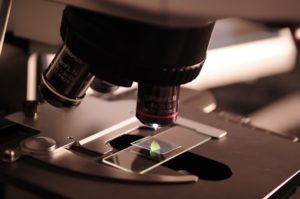A huge breakthrough in the world of gene editing is a tool known as CRISPR, or “clustered regularly interspaced short palindromic repeats.” CRISPR guides enzymes to certain places in a genetic code where they can cut the DNA. Then the cells repair the genes, or other pieces of genetic code can be inserted.
Another recent development is a tool called a gene drive. Usually, when an animal reproduces, there’s about a 50/50 chance of one parent passing on any given gene. If an animal has a “gene drive” gene, when the egg and the sperm fuse, the gene drive takes over. It finds the unaffected section of DNA for the same gene from the other parent, uses an enzyme to cut the DNA, and inserts a copy of the gene drive, which makes the chances of passing on this altered gene close to 100 percent.

So far, gene drives have only been used in labs. How can this technology help us?
Kiwi birds are a flightless bird species native to New Zealand. Kiwis are a famous New Zealand icon, but they are critically endangered. Kiwis evolved with few natural predators, and when Europeans settled in New Zealand they brought rats and stoats to the island. These invasive species are one of the main threats to kiwis.
Some scientists have suggested using gene drives on these invasive species that are threatening kiwi birds. One of the suggested mutations is to make the rats infertile. Eventually, the populations will die off without harming the individual rats. Rats reproduce quite quickly, so altering the genes of every rat in New Zealand would take as little as several years. Sounds great, right? No more rats! Happy kiwis! But rats come from somewhere, even if they’re invasive in New Zealand.
Rats are really good at stowing away on ships; it’s how they got to New Zealand in the first place. The risk is that one of these gene-drive rats travels somewhere where rats are a native and necessary part of the ecosystem, reproduces, and spreads these gene-drive genes to the native population. The risk is that something like this could kill off a native rat population and completely mess up another ecosystem.
That’s an outcome no one wants.
Another question scientists are asking is whether or not humans have the right to do this at all. Do we have the right to completely wipe out a species forever? And who gets to decide?
